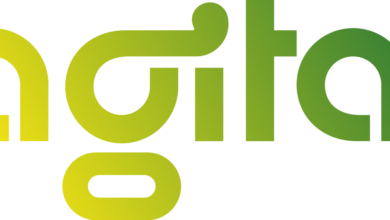Why Accessibility Is Critical in Web Development

The digital age has transformed how people interact, learn, and conduct business. With the web playing an integral role in daily living, it’s critical to ensure universal accessibility, including those with disabilities. According to the World Health Organization (WHO) and the Centers for Disease Control (CDC), approximately 16% of the world’s population has a disability. Yet, the annual Web AIM analysis of the top one million home pages estimates that around 90% of websites don’t comply with some of the basic web accessibility guidelines. This means that errors were discovered regarding the text, images, videos, language, links, and other elements found on home pages. It is incumbent to understand the essence and importance of creating websites and applications that everyone can use.
Web Accessibility Definition and Importance
Web accessibility refers to the inclusive “practice of ensuring that websites and web applications are usable” and accessible to all users, including those with disabilities or limitations. This discipline involves designing and developing digital content that is possible, operable, and understandable for people with diverse abilities to use unhindered.
Disabilities come in various forms, such as visual, hearing, mobility, cognitive, learning, and speech impairments. Accessibility benefits those with permanent disabilities, individuals with temporary disabilities, and aging populations. According to the Centers for Disease Control (CDC), up to one in four people has a disability, making accessibility a critical concern. Legal requirements, like the Americans with Disabilities Act (ADA), and social responsibility further drive the need for accessible design.
Web Accessibility Principles
It is vital for developers to adhere to key accessibility principles to create an inclusive website. These tenets include making content available to everyone, enhancing functionality through assistive technologies, using intuitive navigation and website structure, making information perceivable for all users, and regularly updating websites to meet evolving standards.
Several key features and best practices factor into accessible website and application development, such as:
- Semantic HTML and ARIA roles. By using proper HTML markup to structure content, developers enable screen readers and other assistive technologies to interpret and present information accurately. Accessible Rich Internet Applications (ARIA) roles further define the user interface elements on the page, aiding in their identification and interaction.
- Keyboard accessibility. This feature lets users operate all website functions using only a keyboard without relying on a mouse, which is particularly important for individuals with mobility impairments.
- Alternative text. Alternative text (commonly referred to as “alt text”) is essential for non-text content, such as images and videos. Providing descriptive text alternatives helps users with visual impairments understand the content through screen readers.
- Color contrast. Adequate color contrast between the background and text is also necessary to ensure readability for users with low vision or color blindness.
- Responsive design. Responsive design enables websites to display correctly on various devices and screen sizes, further enhancing accessibility.
- User testing. Testing with real users is an integral part of the accessibility process. By involving individuals with disabilities in the testing phase, developers can better understand diverse needs and make necessary improvements to create an inclusive user experience.
Benefits of Embracing Web Accessibility
Prioritizing web accessibility offers numerous benefits for organizations. By creating inclusive websites, businesses can reach a wider audience, including a significant market segment of people with disabilities. Improving accessibility also enhances user experience, customer satisfaction, and brand reputation, increasing engagement and revenue opportunities. Additionally, ensuring web accessibility demonstrates a commitment to social responsibility and aligns with ethical principles of inclusivity and equity.
Starbucks is one organization that takes web accessibility seriously. The company redesigned its website to be more accessible, implementing features like alt text for images and keyboard navigation. As a result, Starbucks saw increased traffic from users with disabilities and overall improved user experience. Starbucks’ commitment to accessibility, which also includes inclusive store and app design, boosted its brand reputation as socially responsible.
Netflix is another business that developed an accessible platform that includes audio descriptions, customizable subtitles, voice commands, and assistive listening support, among other features. This move expanded its audience and garnered praise for its inclusive approach. To foster continued inclusivity, Netflix works with accessibility and disability advocacy groups and regularly solicits feedback from members. This underscores the company’s dedication to serving all users equally, contributing to its continued success in the competitive streaming market.
Challenges to Implementing Accessibility
Despite the clear benefits, organizations often face challenges when implementing web accessibility. These include technical limitations, varying knowledge levels among team members, resource constraints, and the need for continuous education and training.
To overcome these hurdles, businesses must educate teams about accessibility best practices and integrate accessibility into the development process from the outset. Also, companies need to utilize automated testing tools and engage with the accessibility community to help identify and address accessibility issues more efficiently. It’s crucial to prioritize compliance with accessibility standards, allocate necessary resources, and conduct regular audits to ensure ongoing accessibility.
Future Trends in Web Accessibility
Exciting advancements in web accessibility and inclusivity are underway. Enhanced integration of assistive technologies, such as screen readers and voice recognition software, will empower users with disabilities to interact with digital content more independently. Artificial intelligence and machine learning will revolutionize accessibility testing and improvement, enabling automated identification and resolution of accessibility issues.
Furthermore, inclusive design principles will become standard practice in web development. Organizations will proactively train teams on inclusive design and actively involve users with disabilities in the development and testing processes. By staying informed about emerging technologies and guidelines, businesses can remain at the forefront of creating an inclusive digital environment.
Web accessibility is not just a desirable feature but a fundamental necessity in website and application development. By prioritizing inclusive practices, businesses can reach a wider audience, enhance user experiences, and demonstrate their commitment to social responsibility. Collaborating with disability communities is also critical in creating a truly inclusive web for all.
Web developers and accessibility specialists have a duty to champion inclusivity and ensure that the digital world is accessible to everyone, regardless of their abilities. By embracing accessibility as an integral part of today’s working lives, businesses can make a meaningful difference in the lives of millions of people and contribute to a more equitable society.
About the Author:
Vishal Patel is an engineering director with over 15 years of leadership and a subject matter expert in software development. He excels in driving teams toward strategic goals and innovation and ensuring top-notch deliverables. He effectively harnesses trailblazing technologies to create scalable and efficient solutions that exceed expectations. Vishal has been instrumental in the development of more than 120 e-commerce web applications reaching millions of users in broad-based industries. For more information, contact [email protected].



